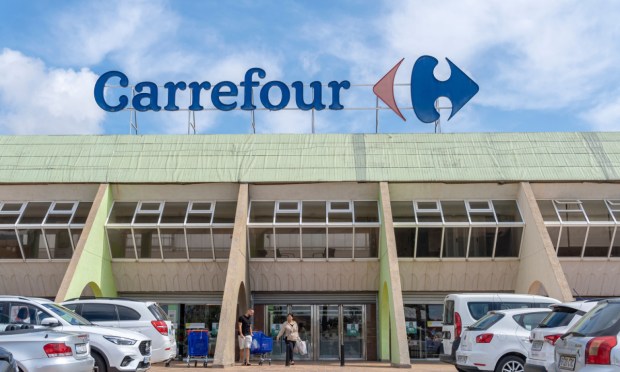Carrefour Calls Out Brands for Shrinkflation as Grocers Resist Price Hikes

Around the world, brands have been addressing cost challenges by quietly reducing the amount of product per purchase — a move that can lose shoppers’ trust — and now Carrefour is firing back.
The French grocer has been adding signs informing shoppers about which brands are engaging in this so-called shrinkflation, Reuters reported Thursday (Sept. 14). The chain has added these warnings for consumers for dozens of name brand products, letting them know that, even as the products have shrunk, the price has increased.
The move comes as the retailer gears up for price negotiations with major food brands, courting consumer sentiment in advance of these talks.
“Obviously, the aim in stigmatizing these products is to be able to tell manufacturers to rethink their pricing policy,” Stefen Bompais, the grocer’s director of client communications, told the news outlet.
Carrefour is not the only grocer that has expressed dissatisfaction with brands’ pricing in the recent past. Earlier this year, it was reported that Whole Foods Market, Amazon’s premium grocery retailer, asked suppliers to lower their wholesale prices so that the chain could reduce prices for consumers.
“We know our customers are weighing the impacts of inflationary pressure on their buying choices,” Alyssa Vescio, Whole Foods’ senior vice president of merchandising, center store, reportedly said in the meeting.
Carrefour’s strategy of airing brands’ dirty laundry, as it were, to consumers marks a shift in how grocers are handling these challenges. Rather than keeping everything between the businesses (at least nominally), the French retailer is courting consumer sentiment by directly calling out these brands. The move is a risky one, given that Carrefour is putting its relationships with some of the largest food companies on the line.
Certainly, shoppers are likely to take heed of this signage. People have been frustrated with shrinkflation for years now, with examples of shrinkflation blowing up on social media platforms, catching the attention of aggrieved consumers. When consumers feel betrayed by shrinkflation and decide to take their loyalty elsewhere, retailers — not just the brands they carry — can face the penalties.
Indeed, many consumers’ affinities are determined by which brands and retailers will give them the most bang for their buck. PYMNTS’ March report, “Consumer Inflation Sentiment: The False Appeal of Deal-Chasing Consumers,” for which we surveyed more than 2,100 United States consumers in February, revealed that 44% of grocery shoppers are deal chasers, willing to go wherever they will get the best price.
These shrinkflation issues are compounded by the fact that consumers feel every bit of grocery inflation nearly three times as intensely as the measured rates. PYMNTS’ May report, “Consumer Inflation Sentiment Report: Consumers Cut Back by Trading Down,” which drew from a survey of more than 2,000 U.S. consumers, found that the average shopper estimated grocery inflation to amount to 22.4% year over year in March, when the Bureau of Labor Statistics (BLS) was reporting it to be 8.4%.
Now, grocery inflation is far lower than it has been in the recent past, down to just 3% year over year as of the BLS’s latest Consumer Price Index (CPI) data released Wednesday (Sept. 13).

